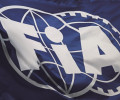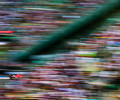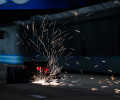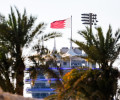2013 Belgian Grand Prix - Friday Press Conference

TEAM REPRESENTATIVES – Andrew GREEN (Force India), Nick CHESTER (Lotus), Jean-Michel JALINIER (Renault Sport), Tom McCULLOUGH (Sauber), Pat SYMONDS (Williams), James Key (Toro Rosso)
PRESS CONFERENCE
James, if I could start with you. I want to talk about the engineering challenges today, of developing new technologies, such as we have for 2014, but in a resource-restricted environment in Formula One, as we have at the moment. What are the key points in your mind?
James KEY: That’s the secret to it in many ways, isn’t it, because we have a lot of new technologies and new things we have to do for next year. Fundamentally, it’s a case of getting the priorities right and understanding how best to pitch what technologies are going to be important and which aren’t, or which are going to be less important let’s say. Certainly when you have a limited budget as a team, you can’t iterate through everything. It’s very easy to spend a lot of money very quickly, so you have to circumvent certain things by kind of iterating and then take your best guess and move on from there. So to certain extent there’s a bit of knowledge you have to go on and in other respects it’s a case of setting priorities.
Obviously you’re switching from Ferrari to the Renault for next year. Do you get the gearbox from Red Bull, presumably as part of all that package. Can you talk a little bit about how big a boost that is in terms of your efforts to move yourselves forward up the grid.
JK: I think certainly it makes a huge amount of sense for us to have a few more synergies where possible with Red Bull – we fundamentally have the same ownership. I think that’s good for both teams. We will take the same engine as well. We’re working extremely well with our engine partners at Renault, who are doing a good job of supporting us. It’s a new experience for us, we haven’t worked with them in the past. In that respect it’s good. We’ll have to see for next year, there are so many unknowns still right now. But to move towards similar powertrain solutions to Red Bull Racing is a very obvious thing to do and can only be of benefit to both sides I think.
Jean-Michel, at this stage, with just a few months to go before the end of this season and with testing starting in January, do you have any sense of where Renault is in terms of power and efficiency compared with your rivals Ferrari and Mercedes?
Jean-Michel JALINIER: I cannot compare ourselves to our competitors but what I can say is that we have set very aggressive targets for all the parameters of the new engine and that we are achieving the targets one after one because today according to our plans we have some engines on benches, the results are now coming and they are in line with our targets.
What is the first order of priority? Is it power? Is it efficiency? What do you see as the key for next year?
JMJ: I think that for next year the two keys are going to be reliability, because it’s a brand new engine with high tech engine inside – internal combustion engine but also the two electrical engines, all the energy recovery systems – so reliability for this new technology will be key. The second key will be energy management for the race.
Just finally, the latest on a deal with Lotus? Is there any more business to be done in terms of the teams you will supply next year?
JMJ: We’re going to supply four teams. We have already a deal with Toro Rosso and Red Bull Racing obviously and the two other teams it’s just a matter of time to finish the contracts.
Pat, great to see you back, welcome, in your new colour scheme. Mid-1990s, I remember you and Michael Schumacher at Benetton racing against Damon Hill and Jacques Villeneuve at Williams, they then were the arch enemies in many, many ways. How does it feel to walk to walk through the doors [of Williams] nowadays and be part of that team?
Pat SYMONDS: Oh, realty great actually. Williams does have that incredible heritage and it’s a heritage I respect a lot. But we can’t live in the past. They were great times, of course they were, but my job now is to make the team today as successful as it was then. It’s quite a challenge but it’s a very enjoyable challenge. The fundamentals of the team are there. It’s a very well equipped team, it has some very good people in it. An analogy I often use is it’s like being the conductor of an orchestra. I think we have some very good instrumentalists in our orchestra. And now we just really need to get them timed together, playing the same tune and bring the success back.
You said that the technical changes for 2014 are the biggest you’ve encountered in your long career. On the theme of technical developments in a resource-restricted environment, you’ve obviously worked for top teams, recently you worked for Marussia, a small team. Can you give us an overview of the impact of dealing with this change for the field in Formula One?
PS: It is huge and I think James summed it up very well, because you’ve got to decide where to put your priorities. When we have reasonably stable regulations you iterate to those priorities. Arguably if you have very stable regulations, everyone iterates towards a very similar design. You also iterate to similar processes. Now when the rule book is ripped up and you start again, you really have to think about what processes are important – what’s going to bring you performance. And of course while everyone is focused on the powertrain and there are a lot of things to do there – cooling’s a huge challenger, energy management is a huge challenge – but of course we must not forget that it’s a reasonably significant aerodynamic change we’re making to the cars. It may not sound much – moving the front wing in a little bit, losing the beam wing at the rear and small changes like that – but in actual fact the aerodynamics of the cars are so inter-related now that it really is something you need to think about a lot. And, of course, we never ‘un-invent’ anything, we never forget what we’ve already done. So we’re not dropping any of our technologies in order to bring the new ones in, we’re just adding to the job.
Thanks for that. Moving to Nick Chester from Lotus. Welcome, Nick. There’s a lot going on at Lotus at the moment. You’ve got the double DRS running this weekend. You’ve got a long wheelbase car, apparently, for Monza. Can you shed a bit of light on your thinking for this final part of 2013 and what kind of statement that makes?
Nick CHESTER: Well, we’re still trying to develop very hard to give ourselves a very competitive run until the end of the year. The passive drag reduction system we’ve been working on for a while. We targeted it for Spa and we’ve run it through P1 and we’ve learned some more with it. I don’t think we’ll carry on through this weekend with it as we didn’t get enough dry running to get where we wanted in P1. We are targeting this strong development until the end of the year and the long wheelbase for Monza is part of that. So we are going to keep bringing developments through Monza and then the following races as well. There are certainly developments also planned for Singapore and Korea.
Like everyone else here, you’re obviously juggling the requirements of 2014. Do you have what you need to build a winning car in 2014?
NC: Yeah, we do. We started the design very early, we’ve been designing for over 18 months on the 2014 car. So that’s given us a good head start and in a way that’s meant that we could develop our 2013 car for longer through the year because we’re in such good shape with next year’s car. As Pat said it’s going to be a very interesting year in 2014. It’s the biggest rule change I’ve seen while I’ve been in the sport. Trying to optimise a car around what’s a very different power plant with very different cooling, it’s quite a big challenge. It is going to be interesting.
Andrew, coming to you now. You’re in a tight battle in the Constructors’ Championship with McLaren. Fifty-nine points to you at the moment, 57 for them, battling for fifth. What’s the strategy then? Are you going to try to hold on to that fifth place, even if it costs you some performance in 2014?
Andrew GREEN: Obviously we’re going to battle as hard as we can. The strategy at the moment is to extract as much as we can out of this car and take each race as it comes and try not to makes mistakes. That’s one of the things we have been guilty of in a few races this season. We haven’t really harvested the points we should have, we should be much further up. Now is the time to get our heads down and just not make mistakes, extract what we can, and not make mistakes and see where we end up. McLaren is… it’s going to be very difficult top keep McLaren behind us, they’re a huge team with huge resources and can carry on developing two cars simultaneously. We’re a much smaller outfit; it’s not something we can do. Our focus really has to be on next year, otherwise we won’t have a car next year, it’s as simple as that.
On the subject of balancing the technological development with budgets, how are you existing arrangements in terms of powertrain? How are you existing arrangements in terms of powertrain for next year and how will that go forward?
AG: Well, it’s nice to obviously keep the same engine partners. That does help. It is a massive change next year, there’s no doubt about it. Reiterating what the other guys have said, it’s the biggest change I’ve ever seen. And it is a challenge. We’re a small team, so it’s an even bigger challenge. There are lots of things we’d like to do. Lots of experiments we’d like to do, lots of information we’d like to take before we make some key decisions and we can’t do them all. It’s as simple as that. We have to make some best guesses and we don’t really want to be [doing that]. It’s a difficult place to be in and it can be very frustrating but it’s a challenge and we’ll see where we end up.
Q: Tom, the same theme really. It’s no secret that Sauber has had some issues on the financial side. You’ve obviously got some new investment coming in – so where are you as a technical group in terms of how you plotted out your development of 2014 and how it’s actually unfolding as we go forward?
Tom McCULLOUGH: Like the rest of the guys said, we started work on our car pretty early for 2014, mainly aerodynamically and then more and more during the year, working closely with our powertrain partner, developing that car. So, the two cars are simultaneously being developed still, at the moment. The current car is coming to an end at the factory. At the track we’ll still get bits later on this year. But it’s just a matter of splitting resources really.
Q: Obviously the 2013 car hasn’t worked out the way you would have hoped. Does that push you towards an earlier switchover to 2014? Considering where you are in the constructors’, some way behind Toro Rosso, does that push you towards thinking you’re not going to catch them and focussing your attention on next year?
TMcC: The start of this year wasn’t as competitive as we wanted. Understanding that is key to making a good car next year, so a lot of the work we’ve been doing on the car is in conjunction with next year’s car. So we couldn’t just stop designing this year’s car. We’ve worked very hard and we have made some good improvements. The update package we bought to Budapest, we were very happy with. We feel we’re understanding the car a lot better now. The wind tunnel programmes and the CFD programmes between the two cars help each other – and that process is still ongoing, especially with CFD. Overall that should give us a more competitive car next year.
Q: So you have grounds for optimism?
TMcC: Yeah! For sure. This year’s car, even though from a points point of view we were not scoring points and saw some of our direct competitors taking those points, in lap time we often weren’t far away. A small difference in lap time, different competitiveness from track to track, bringing improvements to the car… all of a sudden the points can come your way. I wish we’d started the year as we are now but we feel confident for the second half of this season.
QUESTIONS FROM THE FLOOR
Q: (Oana Popoiu – F1 Zone) Pat, as we are already halfway through the season, how will the team benefit from your work at this stage?
PS: Well, I think with a lot of what I’m trying to do with Williams is still a bit of a process rather than the detail and that process can have an effect, reasonably quickly. Now, we are engaged in a battle this year as well, and there are still updates to come to the car: there’s a new front wing, there’s new bodywork, there’s quite a few major upgrades but of course they are things that are already well in the pipeline and not things that I will be influencing. So really my job is to try and look at the process of determining how we get the performance out of the car and I hope that that will have some influence this year but of course it’s not a five minute job and I think we will see a lot more in 2014.
Q: (Kate Walker – GP Week) Andy Green, I wanted to go back to what James said earlier about balancing the development of the 2013 car versus 2014. Obviously you don’t want to sacrifice next year’s performance. Do you have a plan… I mean if McLaren pull ahead in the Constructors’ championship is that the point at which you switch more of your focus over? How much of your workforce is currently on 2014 versus 2013, because you’re the team in the middle with the hardest decision to make, it seems?
AG: It is a difficult balance. I would say the point at which they have more points – they are further ahead than us there are points to score – then that’s obviously over. Like I said, we’ll keep pushing as hard as we can with what we’ve got, but we have to keep an eye on next year, there’s no two ways about it. It’s too big a challenge not for us to have one eye over there. McLaren are a huge, huge team, a championship-winning team and I don’t expect they thought they’d be racing with us at the start of the season, and I’m pretty sure they probably didn’t set themselves the target of fifth in the championship when they started the year. So we’ll do what we can. We know it’s going to be difficult, we’ll take each race as it comes. There will be no step.
Q: Who will make that decision? Will it be the major shareholders or the technical people?
AG: It is a joint decision.
Q: (Mike Doodson – Auto Action) I guess my question is for Jean-Michel. Part of the success of the current V8 Formula One has been that the engine performance has been equalized between manufacturers. I’m wondering whether the FIA has informed you of when it intends to start imposing that same process, introducing controls to equalize the performance of the V6s and when that process does start, I wonder if you, as a highly competitive group, will try to resist it?
J-MJ: There will be a process for convergence after – I don’t know – the first two or three years, definitely there will be a process of convergence. Regarding the V8, one of our strengths is to work with the team to make the quickest car. We have never claimed to have the most powerful engine, we claim to work with the team to make the quickest car and that’s the kind of methodology we are developing for the 2014 car with our partners.
Q: (Mike Doodson – Auto Action) And the FIA controls?
J-MJ: I think there will be some kind of convergence because we cannot sustain - in terms of cost - free competition with open technology, open choices and open engineering. We need to have some limitation in order to reduce and control the development costs per season, so we need it.
Q: (Edd Straw – Autosport) Nick, the long wheelbase car, what’s the reasoning behind introducing that and how will you be doing it? Do you need to make some monocoque changes or can you do it a slightly easier way?
NC: Well, we’ve wanted to do it because we’ve seen there’s a performance gain associated with it. The way we’re going to do it is with a front suspension change.
Q: But there’s homologation to be done?
NC: Yeah, that’s already been done.
Q: (Panos Diamantis - Car and Driver) Mr Symonds, you said that 2014 will see the biggest technical change you’ve ever seen in Formula One, and obviously Williams provides this energy recovery systems to other means of transport in London. Do you think that this will be a turning point in the history of Formula One to launch more ecological technologies?
PS: Yes, I do. It really is a bit of a double-edged sword, the 2014 power train regulations. On one hand, I’m very very pleased that the FIA have had the foresight to really look at engine efficiency or powertrain efficiency and use F1 to push those technologies. I guess the downside for us is that it’s been a long process to introduce it and of course, from the time of starting to talk about it until introducing it we’ve been through a major worldwide recession which has made it difficult for all the Formula One teams to embark on such a big project. But we’ve managed to do it and I think what we need to do now is make sure that we capitalize on it. Formula One, I think, is guilty of far too often hiding its light under a bushel and a lot of the very great things we do as engineers in Formula One we like to keep to ourselves and I think it’s time for that to change. I think it’s time for the world to know what we are doing with Formula One powertrains in 2014 is really quite advanced. It really is something new, it really is the way of the future and therefore I think we can stop before it happens those who may wish to criticize Formula One and motor sport in general for carbon emissions, for use of fossil fuels. Fossil fuels are here to stay, let’s use them efficiently and I think Formula One is doing that, and I think we should be very proud of what we’re doing and we should tell the world what we’re doing.
Q: (Marc Priestley – F1 Times) Question for Nick and Tom: firstly, Tom, both you guys have used this passive DRS-type system on the car today. Tom, do you expect to use it any more this weekend. Nick, you’ve already clarified that you won’t, but is it something that you will continue working on? Do the 2014 rules mean that it’s a viable concept to continue developing?
TMcC: So, today we performed a lot of tests on some new parts and the system actually performed better than we were expecting. It’s still not at the stage where we think we’re going to race it, even though we are pretty tempted at the moment, so there’s plenty of engineers looking at a lot of data. We’ll make that decision later on tonight. With regards to next year, any system that you can use to help reduce drag will always help you, so yes, it is part of the consideration for next year’s car.
NC: And the same for Lotus; obviously anything that drops drag is a useful thing to have, so it’s an interesting direction to pursue.
Q: Just for clarity, the reason not to continue with it for the weekend, is that because the downside of it, not switching properly, outweighs the possible gains of having it?
NC: Partly, and also because we didn’t have a full dry session, we couldn’t get the normal feedback we would like on it and all the measurements we would like, so it just left us a little nervous after P1 that we didn’t want to go into the rest of the weekend with something that may give us a problem, particularly when the car’s already competitive and we didn’t want to risk having a problem in P3 or qualifying with it.
Q: (Edd Straw – Autosport) Pat, you talked about the need for getting more out of the potential of Williams with better technical leadership. Do you, based on your preliminary examinations of the team, think that you need further recruitment in senior technical positions to work just under you to achieve that?
PS: Well, the first thing to remember is that I’ve been there four days, so it’s very much first impressions, but those first impressions are that it’s a team with fabulous facilities, it’s a great factory, there’s most of the equipment that we need there and a lot of very good people. And of course, while I may have been there only four days, a lot of those people I have known for many years and worked with many of them, so there is a lot of quality and I think I would re-iterate what I said earlier, that I think that what we need to do at Williams is that we need to look at process and that’s really where my focus will be.
Q: (Edd Straw – Autosport) Nick, the wheelbase change, any concerns that will have a detrimental effect on the good tyre management you’ve seen from your car? Obviously it will slightly change the way you’re loading up the tyres.
NC: Yeah, we don’t expect so. If anything, it should make the car a little bit more stable, a little bit easier to drive, it could even give us a small tyre management advantage so we think it’s the right thing to do and we’re looking forward to bringing it to Monza.
Ends

 Facebook
Facebook Twitter
Twitter





